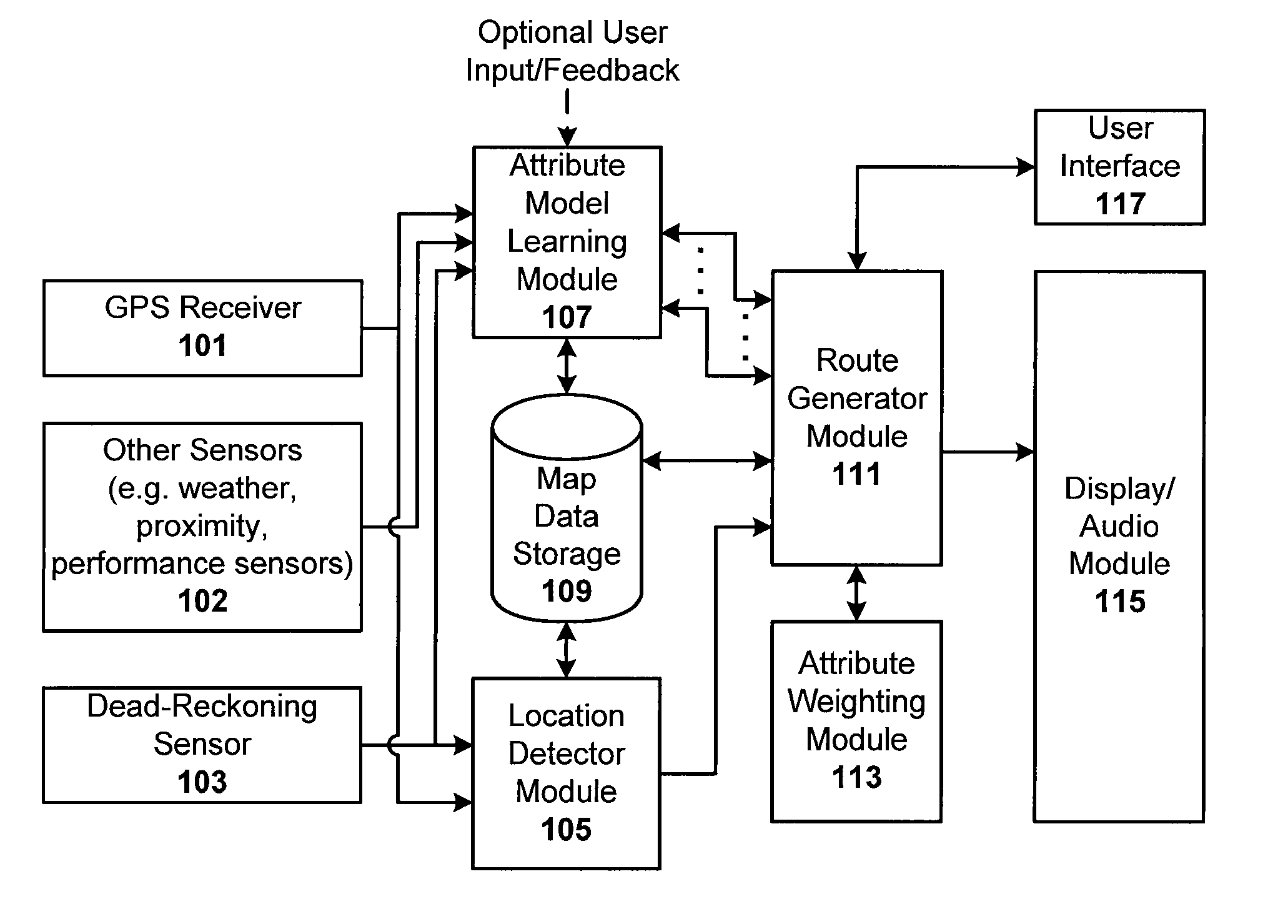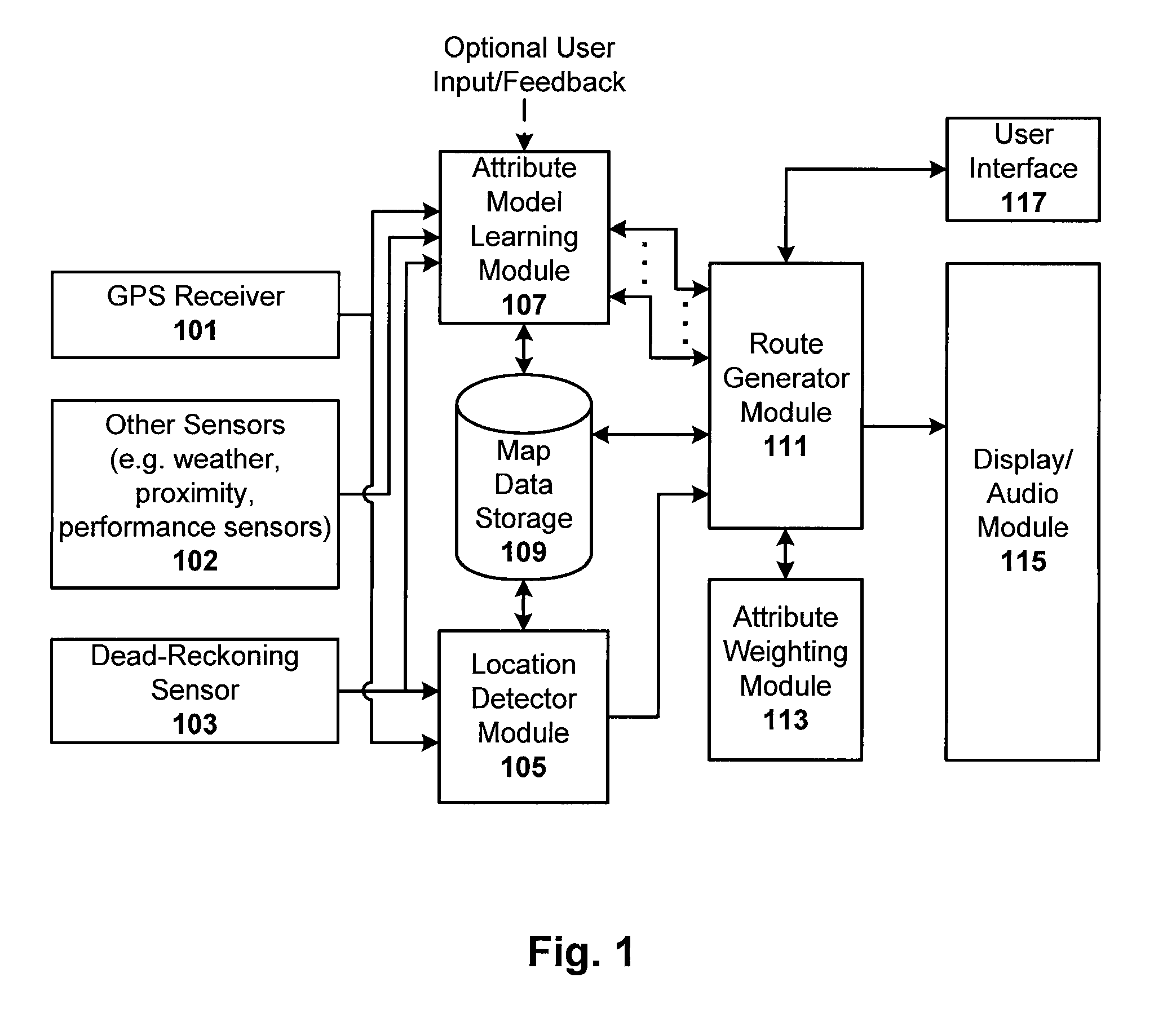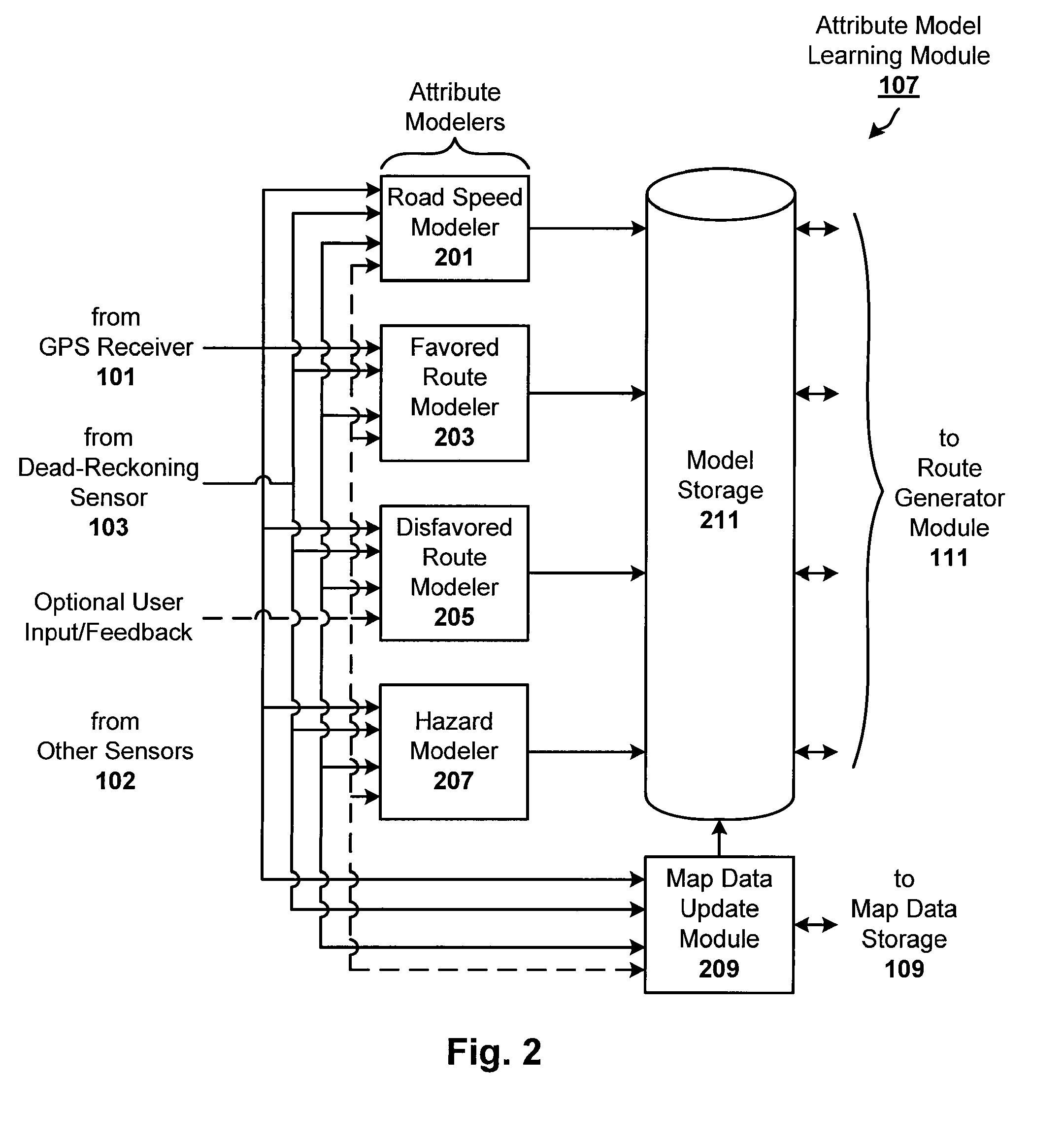Generating attribute models for use in adaptive navigation systems
a technology of attribute models and adaptive navigation systems, applied in the field of navigation systems, can solve the problems of system inability to consider changes over time, many conventional navigation systems are not adaptive, and still not sufficiently adaptive, so as to reduce instabilities in the system, improve route-finding, and accurately predict travel times
- Summary
- Abstract
- Description
- Claims
- Application Information
AI Technical Summary
Benefits of technology
Problems solved by technology
Method used
Image
Examples
Embodiment Construction
[0016]Navigation techniques are disclosed that are adaptive to changes over time and changes under other conditions, and personalized to an individual's driving style, preferences, and road knowledge. The techniques can optionally be used in conjunction with data aggregated from multiple users to provide benefits of both individual and group based data, if so desired.
[0017]General Overview
[0018]As a user drives, modelers are employed to develop and maintain attribute models, which effectively capture the driver's personal driving habits and preferences. Example models include road speed models, hazard models, favored route models, and disfavored route models. Other attributes associated with user's driving experiences can be modeled as well, whether based on the user's personal driving data or driving data aggregated from a number of users. In one particular embodiment, each of the modelers is configured to learn not just one model for an attribute, but rather a plurality of alterna...
PUM
 Login to View More
Login to View More Abstract
Description
Claims
Application Information
 Login to View More
Login to View More - R&D
- Intellectual Property
- Life Sciences
- Materials
- Tech Scout
- Unparalleled Data Quality
- Higher Quality Content
- 60% Fewer Hallucinations
Browse by: Latest US Patents, China's latest patents, Technical Efficacy Thesaurus, Application Domain, Technology Topic, Popular Technical Reports.
© 2025 PatSnap. All rights reserved.Legal|Privacy policy|Modern Slavery Act Transparency Statement|Sitemap|About US| Contact US: help@patsnap.com



